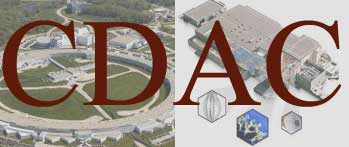The Consortium for Materials Properties Research in Earth Sciences (COMPRES) is a community-based consortium whose goal is to enable Earth Science researchers to conduct the next generation of high-pressure science on world-class equipment and facilities.
COMPRES is charged with the oversight and guidance of important high-pressure laboratories at several national facilities, such as synchrotrons and neutron sources.
COMPRES is supported by the Division of Earth Sciences at the National Science Foundation.
Goncharov, Alexander. “Unanswered Questions in Deep Carbon Research” presented at the 2009 Annual Meeting keynote | Sloan Deep Carbon Cycle Workshop, Carnegie Institution, Geophysical Laboratory | Washington, D.C., May 15, 2008.
A. Kolesnikov, et al., "Methane-derived hydrocarbons produced under upper-mantle conditions". Nature Geosci., 2, 566-570 (2009).
"Our results support the suggestion that hydrocarbons heavier than methane can be produced by abiogenic processes in the upper mantle."
Recent work carried out at Carnegie/DOE Alliance Center (CDAC) suggests that substantial amounts of the hydrocarbon material could exist in the deep Earth and be formed by inorganic (or abiogenic) processes. These hydrocarbons, which include natural gas and petroleum, could migrate from the mantle to the near-surface region and contribute to 'fossil fuel' reserves. Read more about the work of Alexander Goncharov and colleagues from Sweden and Russia here.
A number of chemical reactions have previously been considered as a potential mechanism for hydrocarbon genesis, but they were not verified experimentally under conditions relevant to the Earth’s interior.
See: Sloan - Carnegie Institution for Science. 2008. Deep Carbon Observatory Founders Committee Meets: Needs and Opportunities in Deep Carbon Cycle Research.
To date, consideration of the global carbon cycle has focused primarily on near-surface (i.e., relatively low-pressure and temperature) phenomena, with the tacit assumption that oceans, atmosphere and shallow surface environments represent an essentially closed system with respect to biologically available carbon.
However, recent data and theoretical analyses from a variety of sources suggest that this assumption may be false.
See: Sloan - Carnegie Institution for Science. 2009. Hydrocarbons in Deep Earth?
The oil and gas that fuels our homes and cars started out as living organisms that died, were compressed, and heated under heavy layers of sediments in the Earth’s crust. Scientists have debated for years whether some of these hydrocarbons could also have been created deeper in the Earth and formed without organic matter. Now for the first time, scientists have found that ethane and heavier hydrocarbons can be synthesized under the pressure-temperature conditions of the upper mantle —the layer of Earth under the crust and on top of the core. The research was conducted by scientists at the Carnegie Institution’s Geophysical Laboratory, with colleagues from Russia and Sweden, and is published in the July 26, advanced on-line issue of Nature Geoscience.
Directed Energy Drilling (from MIT)
Mechanical drilling technologies are fully mature. New approaches are needed to make future major advances in increasing access to and reducing costs for underground energy resources...
...There may be other paths to open well stabilization, unimaginable by current mechanical drilling experience that could make possible record penetration into the Earth’s crust with directed energy sources.
The technology that has been developed by DOE and the world wide fusion energy research community to heat plasmas to 300 million degrees Centigrade opens up new possibilities for drilling that should be explored. (Woskov,Cohn 2009)
See: Center for Dark Energy Biosphere Investigations (C-DEBI)
Gold, Thomas. 1998. The Deep Hot Biosphere : The Myth of Fossil Fuels. New York: Springer | Copernicus, November 6.
Woskov, P., and D. Cohn. Millimeter Wave Deep Drilling For Geothermal Energy, Natural Gas and Oil. Annual Report 2009. Plasma Science and Fusion Center: Massachusetts Institute of Technology, September 2009.











